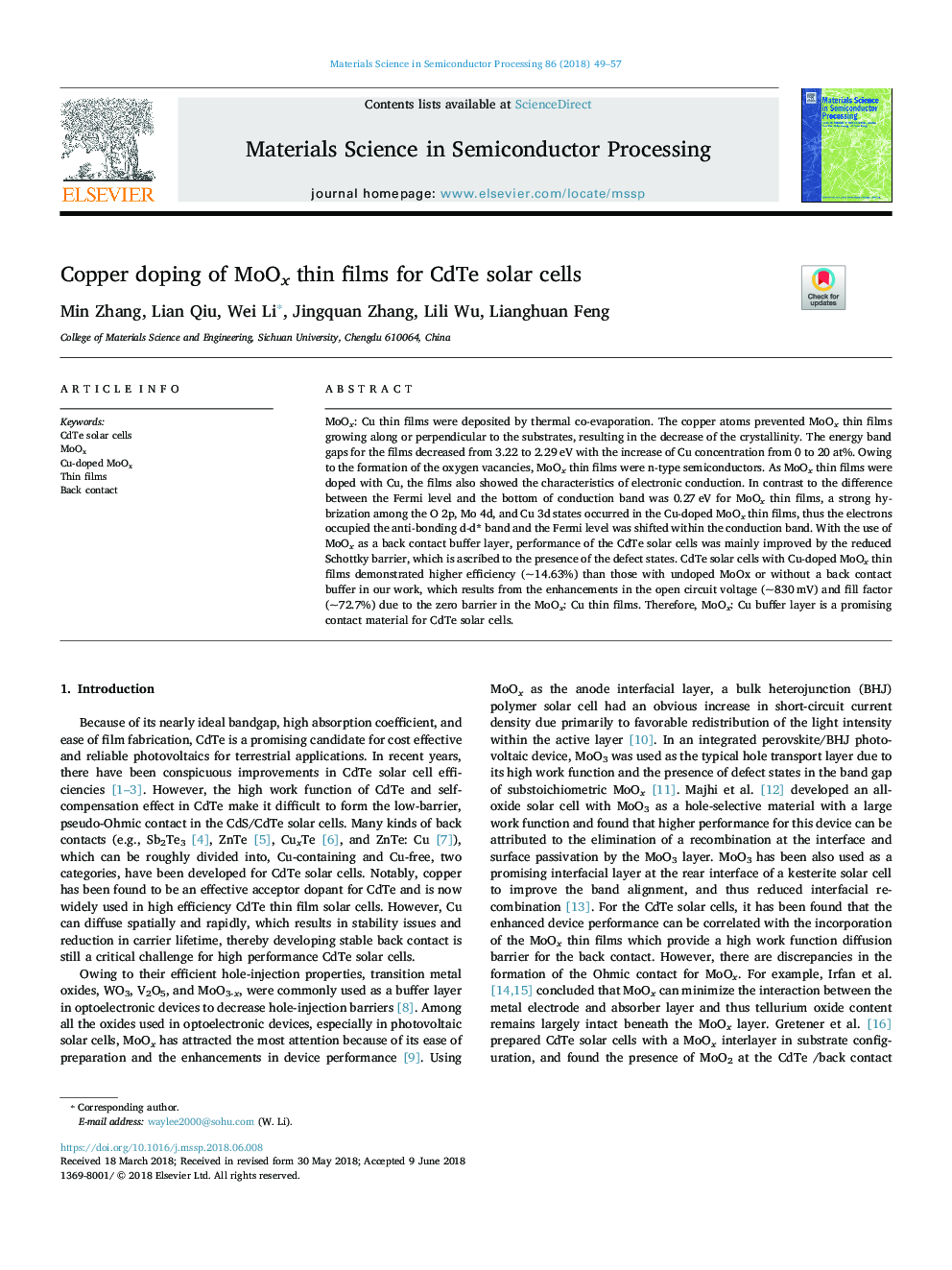| Article ID | Journal | Published Year | Pages | File Type |
|---|---|---|---|---|
| 7117450 | Materials Science in Semiconductor Processing | 2018 | 9 Pages |
Abstract
MoOx: Cu thin films were deposited by thermal co-evaporation. The copper atoms prevented MoOx thin films growing along or perpendicular to the substrates, resulting in the decrease of the crystallinity. The energy band gaps for the films decreased from 3.22 to 2.29â¯eV with the increase of Cu concentration from 0 to 20â¯at%. Owing to the formation of the oxygen vacancies, MoOx thin films were n-type semiconductors. As MoOx thin films were doped with Cu, the films also showed the characteristics of electronic conduction. In contrast to the difference between the Fermi level and the bottom of conduction band was 0.27â¯eV for MoOx thin films, a strong hybrization among the O 2p, Mo 4d, and Cu 3d states occurred in the Cu-doped MoOx thin films, thus the electrons occupied the anti-bonding d-d* band and the Fermi level was shifted within the conduction band. With the use of MoOx as a back contact buffer layer, performance of the CdTe solar cells was mainly improved by the reduced Schottky barrier, which is ascribed to the presence of the defect states. CdTe solar cells with Cu-doped MoOx thin films demonstrated higher efficiency (~14.63%) than those with undoped MoOx or without a back contact buffer in our work, which results from the enhancements in the open circuit voltage (~830â¯mV) and fill factor (~72.7%) due to the zero barrier in the MoOx: Cu thin films. Therefore, MoOx: Cu buffer layer is a promising contact material for CdTe solar cells.
Related Topics
Physical Sciences and Engineering
Engineering
Electrical and Electronic Engineering
Authors
Min Zhang, Lian Qiu, Wei Li, Jingquan Zhang, Lili Wu, Lianghuan Feng,
